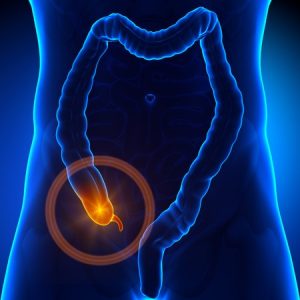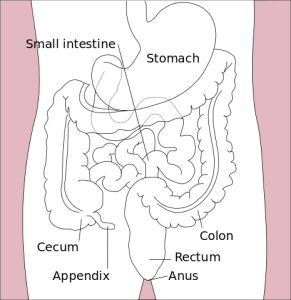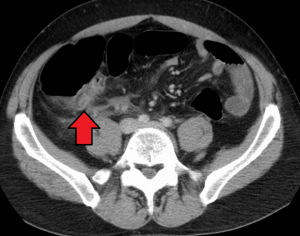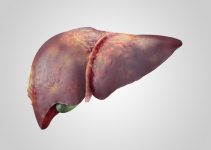What is appendix?
Page Contents
The appendix is a small, thin pouch and worm-like structure that is present in the colon and connected to the large intestine. It is anatomically termed as the vermiform appendix which means worm-like. The appendix is located in the lower part on the right-hand side of the abdomen and is usually a closed-ended, narrow tubular tissue, i.e., about 5-10 cm (approximately 4 inches long).
What is appendix pain?
Appendix pain medically termed as appendicitis is a painful swelling of the appendix present in the cecum of the colon. If not appropriately treated on time, it might burst and be life-threatening. Pressing on that area, coughing or a walk may increase the pain making the situation worse. It can happen to any person at any point of time but is common more in men than women. Appendicitis occurs mostly between the ages of 10 to 30 years.
An appendix pain develops mainly in the middle of the abdomen which may appear and go but gradually moves to the lower part of the right-hand side of the abdomen. The pain becomes constant, and with time it becomes severe.
Causes of Appendix Pain
Appendicitis occurs due to blockage or any obstruction in the appendix due to a congregation of mucus or other parasites. It produces bacteria and rapidly multiplies as well as infects the intestinal wall. The growth of bacteria leads to inflammation and irritation causing pain that mostly begins in the middle of the abdomen that may appear or disappear at times. Other likely causes include:
- Cancer: Mostly rare, the presence of cancerous tumor might cause a blockage in appendix causing pain in that area.
- Infection: Any obstruction might eventually lead to an infection that makes the appendix inflamed as a natural reaction.
Signs & Symptoms of Appendix pain
- Mild pain at first near the navel or upper part of the abdomen
- Vomiting after the pain
- Nausea
- Swelling in the abdomen
- Loss of appetite
- Diarrhea
- High fever up to 102 degrees
- Constipation
- A feeling of tenderness in the abdomen.
- Difficulty to pass gas.
- Pain while urinating
- Severe cramps
Differentiating Appendicitis from Other Health Conditions
Sometimes it becomes difficult to diagnose appendix pain as the symptoms are quite similar to many other abdominal diseases which include:
- Problems in the gallbladder
- Infection in the bladders
- Urinary tract infections
- Crohn’s disease
- Gastritis, several intestinal infections
- Ovary ailments
- Onset of labor pain during pregnancy
Also, due to its variation in size, location and being nearly located to other organs in the abdomen, it is tricky to differentiate appendicitis from other pelvic and abdominal issues. Some other conditions that may be confused with appendicitis are:
- Pelvic inflammatory disease (PID)
- Diverticulitis mainly caused on the right side abdomen
- Meckel’s diverticulitis
- Liver diseases
- Duodenal ulcer
Diagnosis of Appendicitis
Some tests that are highly recommended for diagnosing appendix pain are:
- CT scan and ultrasonography
- White blood count test
- Examination to check if there is inflammation in the abdomen
- Abdominal X-ray
- Blood test to detect any infectious elements present
- Urine tests to recognize infections in the urinary tract
- Rectal examination
- Barium Enema
- Laparoscopy
Risks & complications due to appendix pain
- Inflammation tends to develop a lump or a structure in the right lower abdomen. This mass grows due to the scarring caused by the medicines used for healing and might increase the risk of cancer in the abdomen.
- Perforation is the most critical issue that may lead to a peri-appendiceal abscess (segregation of infectious pus). It may also lead to infections in the entire lining of the abdomen wall and the pelvis. The complication occurs mainly due to delay in diagnosis and proper treatment.
- Another severe complication occurs when the infectious bacteria enters the blood and affects other parts of the body too. This condition called sepsis is a rare yet very serious condition that can even be life-threatening.
- Blockage in the intestinal wall due to the inflammation around the appendix leads to compression of the intestine. Due to blockage, the intestine fills with gas and liquids with symptoms like nausea and vomiting.
Treatment
Surgery
At times, the appendix gets healed without surgery if the rupture happens with infection and inflammation. However, the symptoms may also go away with the use of antibiotics, especially in case of older people. As soon as the appendix gets diagnosed, it should be immediately removed by appendectomy to avoid the risk of an appendix burst. It is done under anesthesia either by a keyhole (laparoscopy) or open surgery. However, keyhole surgery is preferable as the patient recovers sooner than the open technique.
Alternatives to cure appendix pain
In case the lump or mass comprises of fatty tissue, it recovers and heals the issue on its own. However, if it is located during diagnosis, doctors might advise surgery wherein the patient is treated first with antibiotics and then operated a few weeks later. In some instances, the operation is not at all necessary, and the lump may disappear with medicines only.
Factors during Recovery after Surgery
After the surgery, you must keep an eye on the patient for various symptoms which are prone to cause further infection. They are as follows:
- Increased pain & swelling
- Repeated vomiting
- High fever
- Discharge from the area operated
- Wound is very sensitive to touch
How to prevent Appendix pain?
It is difficult to prevent appendix pain, but some foods may lower the risk. Intake of foods rich in fiber might lessen it. Fresh fruits and vegetables containing high fiber can help in preventing constipation and build up of stool which is the primary cause for appendicitis. Some high fiber items that may be helpful to avert it include:
- Apples
- Artichokes
- Pears
- Raspberries
- Green peas
- Lentils
- Broccoli
- Whole wheat spaghetti
- Oatmeal
- Bran flakes
- Black beans
- Barley





